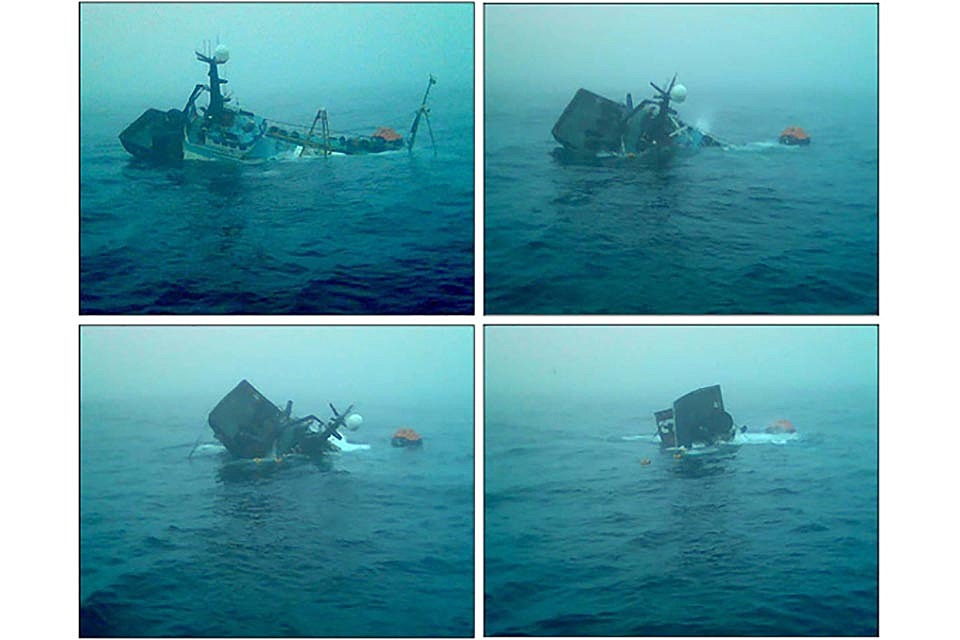Safety flyer to the fishing industry - Harvester and Strilmøy
Published 14 June 2006
1. Summary
Collision and sinking in fog while pair trawling on 4 November 2005

Fishing vessel Harvester sinking over a four minute period
2. Narrative
Just before dawn on 4 November 2005, Harvester was engaged in pair trawling and heading south. The other vessel of the pair, Ocean Harvest, was a quarter of a mile away to starboard. There was little wind, and only a low southerly swell. Visibility was only half a mile in fog. Each boat was fitted with two radars. One was kept on the 0.25 mile range for position keeping, and the other used on longer ranges for lookout.
The supply vessel Strilmøy was first seen on radar at about 5 miles by the skipper of Ocean Harvest who was on watch. He confirmed by radio that the watchkeeper on Harvester had also seen the approaching vessel, and both started to plot the vessel on their radars. It was soon apparent that the approaching vessel would pass close ahead of Ocean Harvest and was on a collision course with Harvester.
The crews of the fishing vessels had recently become increasingly used to other vessels passing them at close range, and they assumed that this was another occasion when the approaching vessel would alter at the last minute. It didn’t.
The skipper of Ocean Harvest tried to call the Strilmøy by radio but got no response. The watchkeeper on Harvester then started to take avoiding action by altering course using the auto-pilot. The course was changed through 15º-20º, before the collision occurred. This action avoided a beam-on collision, which could have resulted in serious loss of life.
The collision caused a split in the Harvester’s side in the fish hold, and also split the bulkhead between the fish hold and engine room. All the available pumps were started, and although they were keeping pace with the water level in the engine room, they could not cope with the water entering the fish hold. The skipper decided to abandon his vessel, and the liferafts were launched. The crew put on their immersion suits, and some also put on their lifejackets. All 5 crew were picked up from the liferaft by Ocean Harvest, and were landed ashore later that day.
3. Safety lessons
While the main cause of the collision was the lack of proper lookout maintained on the Strilmøy and the subsequent lack of any avoiding action, there are lessons to be learned by fishermen to avoid a repeat of this accident.
- The COLREGS change in fog. There is no stand-on situation, and all vessels give-way to all other vessels. Even if you are fishing you should give-way in fog.
- The Harvester should have altered course when it first became clear that the Strilmøy was on a collision course.
- Although the immersion suits in use had integral buoyancy, they were not lifejackets. So even though they would help keep you afloat, they would not turn you onto your back if you were unconscious in the water. The two should be worn together. MGN 155 (F) Buoyancy Equipment for Fisherman at Work contains advice on this subject from the MCA.
Our accident investigation report is available at: https://www.gov.uk/maib-reports/collision-between-standby-vessel-strilm-y-and-pair-trawler-harvester-130-miles-north-east-of-peterhead-scotland-resulting-in-harvester-sinking
For all general enquiries:
Marine Accident Investigation Branch
First Floor, Spring Place
105 Commercial Road
Southampton
SO15 1GH
Email iso@maib.gov.uk
Enquiries during office hours +44 (0)23 8039 5500

